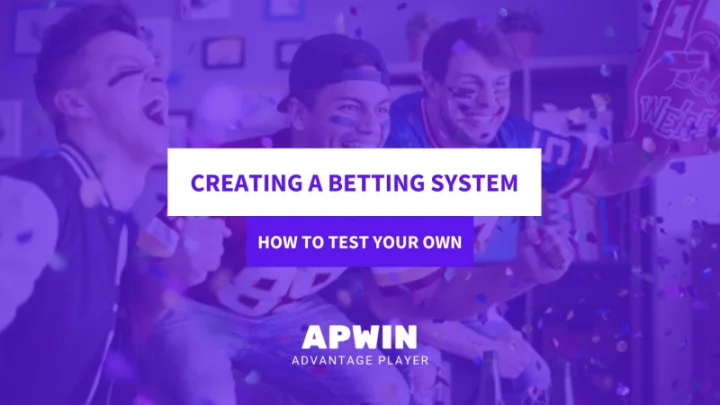If you’re unsure of testing your own betting system, you’re flying blind. Here, we’ll be looking at why you should test, the kinds of testing and the methods used to test your betting systems.
You may call every step of betting a form of testing. While you’re collecting information to make the base of your system, you’re testing. Once you’ve gathered your method and done some trials and backtests, you’re obviously testing. Then, when you’re using your system, whether successful or not, you’re also testing every subsequent bet. Knowing and analysing how your system works are a must in creating and maintaining a winning betting system.
Why Do We Test?
This might seem obvious, but if you don’t test something, how would you know if it works?
However, this is just the beginning. We comprehensively test so that we know the difference between variance and value. To find out how variance affects our perception, we did a simple calculation:
- Bets: 100
- Odds: 2.00
- Stake 1% (proportional staking)
- Yield: -4%
This system will clearly be unprofitable in the long run as it profits 30.80% of the time. If you were in this 30.80% and happy with this 100-bet trial, you might as well not test it at all.
You’d be heading into bankruptcy as the -4% yield will chip away your betting account and sanity. This is why we must test and do it properly. You should use the three listed methods below in one way or another.
Actual Test with a Small Bankroll
The simplest test method is to trail your system with a smaller bankroll. It's a real test. When we looked at some long-term profitable sports bettors, there were some surprising answers. But it was no surprise that most recommended testing your system with a small bankroll before putting in any significant amount of money. This can sometimes go on for years.
This doesn’t mean winning 15 of the 20 intuitive head-to-head bets. This means using your well-defined system over months and even years while diligently logging 1000+ bets to validate (or invalidate) your system.
It's an excellent method. It's simple but works. However, it takes a long time. Spending years experimenting on a system only to find out it's ineffective would be demoralising.
Betting volume is the key here. If you can find ten value bets a day that fit your betting system’s criteria, you can find valuable, consequential data of 1000 bets logged in months. But it can be a slog if you’re not betting a lot. This is where the backtest method offers its value.
Backtesting
Luckily, every sports result and thousands of detailed stats are accessible online, particularly on football stats sites like APWin. You can find updated resources and matches all over the world here.
The secret to testing and improving your system is to spend your time looking at past results and spot any trends in the statistics. Here’s an example (that you shouldn’t use):
Over the last 500 matches, how is Team X’s winning rate when the weather is below 18 degrees Celsius?
First, you’ll need to log the previous 500 games from a results database. Then collect the relevant weather conditions data and put them in a spreadsheet which gives you a correlation. It’ll be a % in this case.
You found that 56% of the time, Team X wins in sub-18-celsius conditions. They must love the cold weather compared to the rest of the league.
With a 56% probability of occurring, we need the odds of 1.80 to break even. If you can find odds of 2.00, you’ve clearly found the odds above what's required. There are plenty of odds above 2.00, right? Then we’re rich.
Remember that this is a terrible and unimportant metric to backtest, but the theory really is that simple.
You will usually need to test multiple metrics against each other for over 1000 bets and fail many times before you find one successful system with enough betting volume.
The best thing about backtesting is that you can spend your time doing it right now. If you’re trialling a system in real-time, you’ll be waiting to log results every week or season. On the other hand, backtesting will let you commit and spend as much time as you need to find a successful betting system.
Closing Line (Odds) Testing
Across the board, no one’s smarter than the market. No one! Specifically when the market closes. Over the long term, the closing line, which is the odds at which the market closes, is comparable to the actual probability of the event (minus the bookmaker’s margin). This is known as the CLV (Closing Line Value) and offers us something to compare.
The accuracy of the closing odds is a result of many things:
First, the bookie publishes the odds, which they believe reflect the actual probability of a match or event and uses a considerable amount of resources. Casual bettors usually bet on either side of the event without a well-planned method. This doesn’t affect the odds much unless the bookie has made an error.
Then, we have serious bettors who use their analysis to look for fault and value in the bookmaker’s odds. Bookies react to these incoming bets, as these actions of highly regarded profitable bettors help them adjust the odds to the calculated ‘true odds’ of the event.
It's ultimately a battle between bookmakers and serious bettors, where the two fight to create the actual probability of the event. While the two battle it out, a sea of casual bettors throw their money at the bookie. This range between where the odds start and where they close is where the actual value lies.
To be clear, it's possible to win bets purely from the closing odds. However, it's tough. You’re not only competing against the bookmaker’s analysis but also with other experienced bettors, additional information gathered by the bookie, and the bookies’ margin.
Therefore, the key to estimating yourself and your ability against the closing odds are:
- Record the odds where you placed your bet
- Record the closing line odds
- Calculate the bookie’s margin
- Estimate your implied yield
- Repeat it over hundreds of times
For example, your system found a market where you believed the odds should be 1.90 -2.00, but you’ve found the odds of 2.05. This is a clear value bet based on your system.
The market later closed at 1.95 after removing the bookie’s margin of 2% of the true implied odds at 2.00.
To find the actual yield you achieved, do 2.05/2.00, which equals 2.5%. This means you’ve beaten the actual closing line by 2.5%.
Closing Line Value (CLV), as a theory, isn’t perfect, but it may be the best way to test a system.
Other Factors to Test
A profitable system doesn’t always mean that it will succeed forever; let us explain why:
Time/Yield Ratio
There is a $ value for your time. This is where the trialling method comes to play.
If you spend three hours a day looking at markets and placing bets, and your average profit is $40. This means one and a half hours of your time is worth $20. Is this a fair amount for your time?
You must find out the cost of the time and effort you’ve put into your betting system. Trial the system and find out how long it takes for you to place bets, compare the odds, calculate stakes and evaluate the actual cost of it.
Availability of Bookmaker
You’ve probably heard of this; bookmakers don’t like it if you have a winning system. They also have the potential to break it down.
Most bookies will limit or ban you due to regular successful bets and large volumes. Your backtests and small bankroll trials don’t account for that.
First, determine how many bookies your system will work with. Then, create accounts with as many bookies as you can. The key here is to avoid being limited and banned by spreading your bets across multiple bookmakers. You can ask other bettors about their experiences. You don’t need to do much research to find out that Pinnacle doesn’t limit while Paddy Power does.
Do your research, as the last thing you want is to test a system for a year only to get banned within a week.
Conclusion to Testing Your Betting System
Building a profitable method requires you to test it diligently. A solid plan and framework for establishing an effective betting system should be:
- Backtest your base hypothesis over a month to a multi-year period and analyse closing lines for the back-tested data.
- Test your system with a small bankroll and bet up to 1000 times. Analyse every bet against the closing line.
- Compare the backtest with your trial - did it have any oversights?
- Look at the human aspects of your system. Were the bets too time-consuming to make and cut into your family time?
- Look at the logistics. How available were the bookies and do you know if they limit successful bettors quickly? Is there enough volume?
It’s a time-consuming process, but it's worth it. Good luck with building your betting systems and happy (value) betting!



